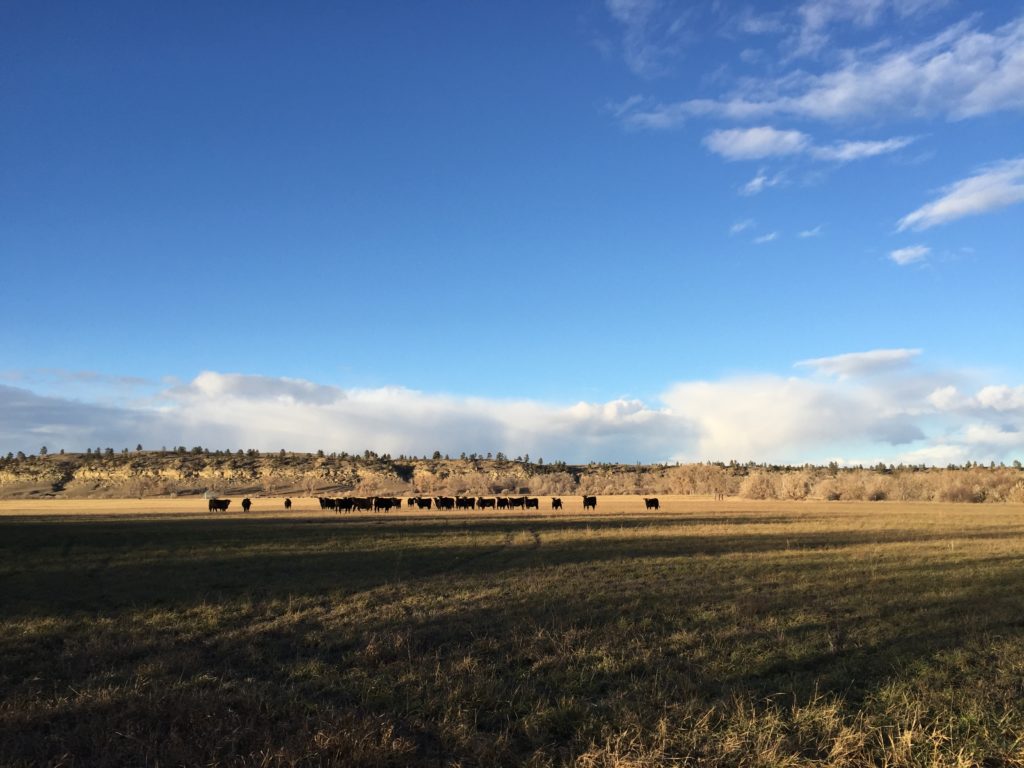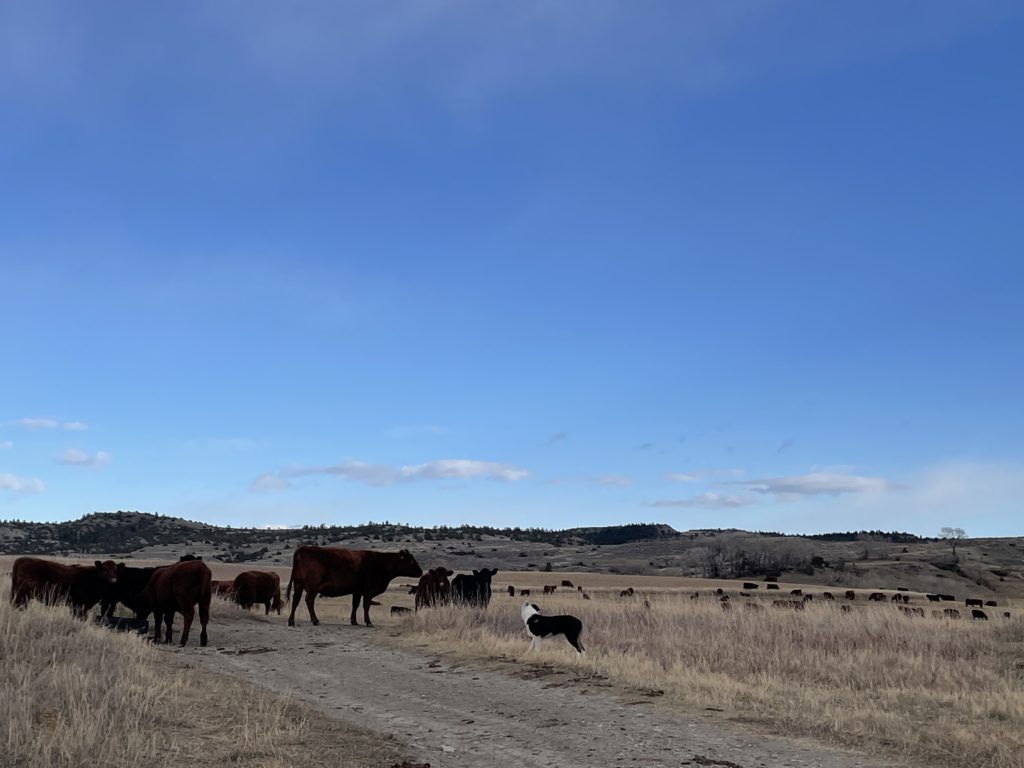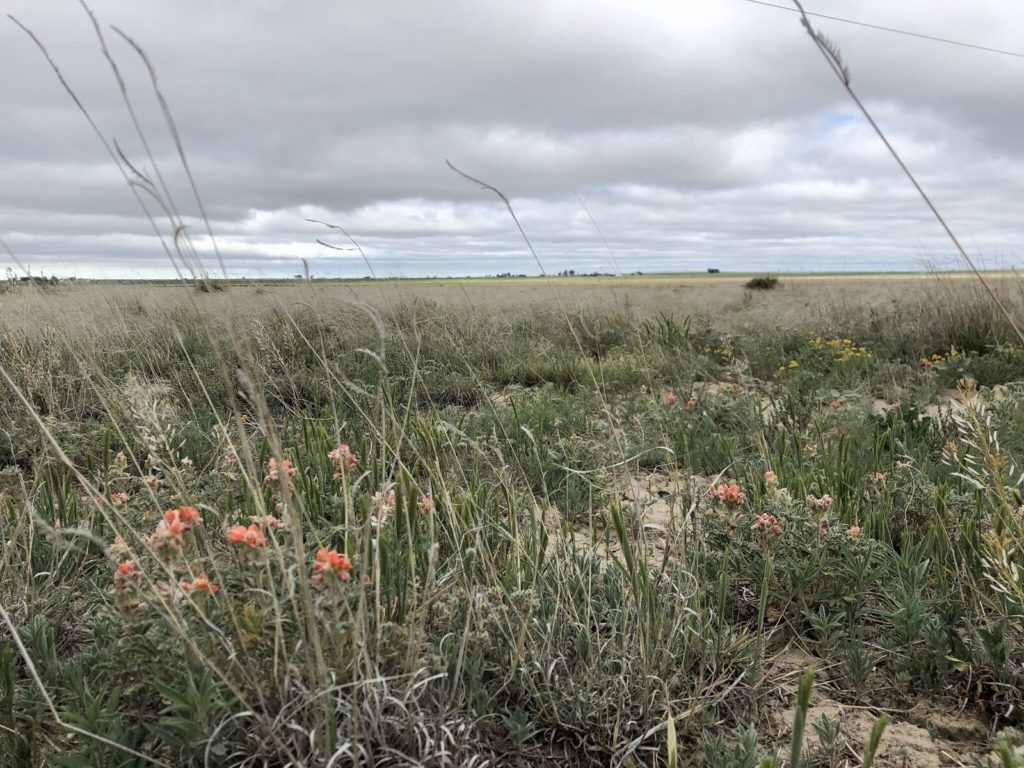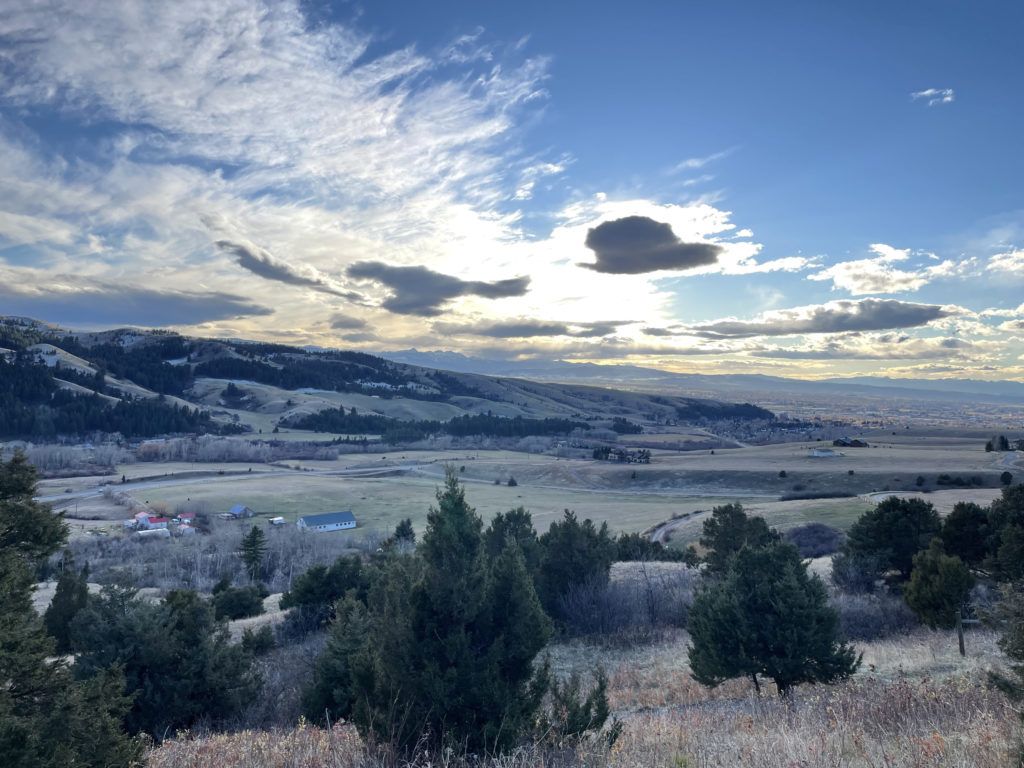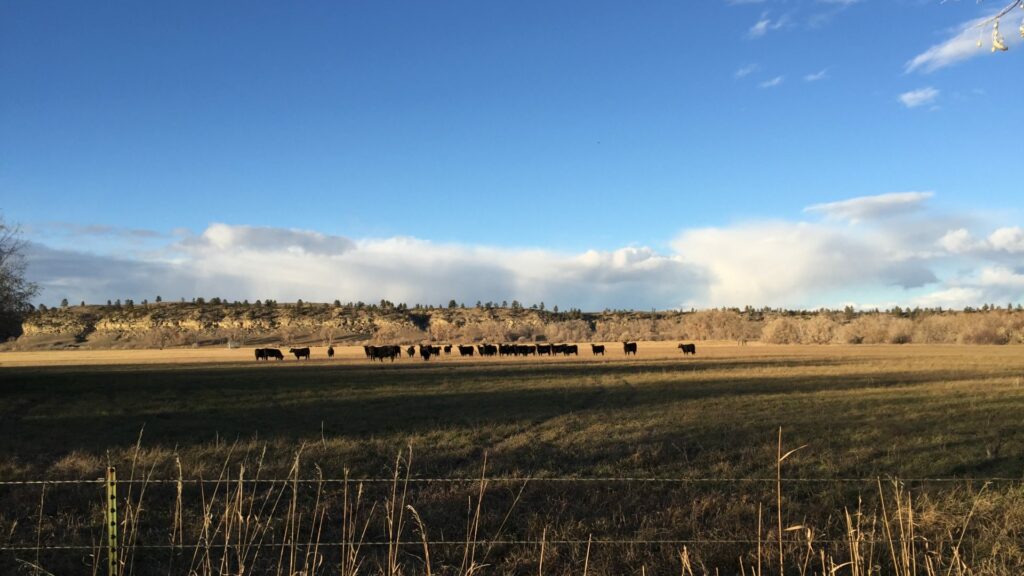Enrolled: 250,000 acres
Phase 1 Locations: Montana
Methodology: Verra VM0026
Benefits: Improved soil health and increased carbon sequestration in soil. These benefits result from HelpBuildTM offsets initiating and accelerating improved practices on cattle ranches in Montana. HelpBuild offsets provide funding for fencing and water infrastructure that allows ranchers to increase their number of pastures, decrease the size of the pastures, and increase speed and number of livestock rotations, thus prolonging rest and recovery on more acres of grassland.
For interested ranchers and land managers see our page for participants.
Project Description
The dynamic grasslands of the American West were well suited to the introduction of the cattle industry in the 19th century. Having evolved with the bison species (Bison bison), a close relative in the Bovidae family to cattle, the grasslands provided precisely the habitat and forage needed to sustain the introduced cattle herds. The perennial grasses had evolved with the seasonal migrations of bison and other migratory herbivores and thrived when grazed over short periods, with high intensity, and limited selectivity. Of course, with the cattle herds came homesteaders and with them, fences. With ranches and property boundaries, the cattle began to graze patches of grassland for long periods of time with limited or no rest periods.
Over the past two centuries, overgrazing without sufficient rest has led to an increase in bare ground, erosion, establishment of invasive species, loss of perennial grasses, reduced water holding capacity, and consequently reduced productivity for cattle operations. The adverse impacts go beyond the cattle industry, as this ecosystem supports wildlife, tourism, and essential water resources for animals, municipalities, and businesses alike. The Northern Great Plains Regenerative Grazing project seeks to restore this ecosystem and its resilience to its full potential, sustaining abundant and diverse species and livelihoods.
Montana ranchers seek to improve their land’s forage. However, their access to the resources necessary to do so is variable and often limited. The resources could be materials (such as fencing and water infrastructure), labor and time, or technical education or implementation support. Grazing consultants and workshops can be expensive. Additionally, what works on one ranch may not work on another.
The cattle business is a business of skinny margins. Investments in ranch improvements need to have immediate returns. In semi-arid grasslands, it takes a long time for ecological changes to take hold — longer than the time needed for ranch businesses to receive a return on investment. Native’s HelpBuildTM carbon model brings the upfront investment necessary for cattle ranchers to take the necessary steps to accelerate and improve their soil’s health. In addition, the investment bridges the financial gap between making the changes and when the ranch productivity and profitability benefits take hold.
The project leverages carbon funding to support ranchers to improve practices to achieve these landscape goals. Practices included in the project to improve soil health include:
- Higher intensity rotational grazing, imitating the rest and recovery periods of migratory herbivores. This transition requires more fencing, more active cattle management, and often building water infrastructure to supply potential pastures previously not viable.
- Reducing the selectivity of grazing and relieving pressure from waterways are vital components of allowing perennial grasses, native species, and riparian zones to regenerate.
- Supplementary practices that support grazing practices and accelerate restoration may include the addition of compost, soil microbes, and other symbiotic soil species that increase the decomposition of organic matter and the subsequent availability of nutrients.
Project Structure
Ranchers most need carbon payments in the first few years of implementing the developments needed to improve their grazing practices. The carbon payments provide the capital and financial security to improve soil health before the productivity benefits are realized. Therefore, Native’s HelpBuild is the best suited model for enabling corporate funds to help ranchers to make sustainable changes to increase their lands’ productivity and deliver real, measurable, and additional carbon sequestration as well as soil health benefits.
The project has received validation with the Verified Carbon Standard in April 2022. Help Build payments will be made for the first few years of the project. Grazing plans and ranch records will be monitored and evaluated annually with support from local non-profit project partner, Western Sustainability Exchange. The grazing plans will be modified annually to reflect the most up to date best practices and existing land, climate conditions, and needs. VCS verification of carbon accruals will be made within the first 3-5 years.
Project Benefits, Regenerating Western Grasslands
While the project activity focuses on ranch practices and increasing productivity, the benefits to Montana’s grasslands go well beyond the cattle industry. Montana, as a part of the Greater Yellowstone Ecosystem, is home to a diversity of plant and wildlife species that serve vital ecological functions while also supporting Montana’s economy through recreation and tourism. Increasing the resilience and carrying capacity of Montana’s ecosystems means reducing the traditional tensions between conservation efforts, the ranching industry, and hunting and fishing industries.
The project also seeks to reduce pressure around Montana’s vital waterways and restore the riparian zones that have been depleted by decades of cattle selectively and extensively grazing near water resources. Restoration of riparian habitat extends far beyond perennial grasses and includes the breadth of species within the ecosystem. Trout fishing, which is so vital to Montana’s tourism economy, depends on water systems that are resilient to drought and able to adequately filter water runoff from surrounding land. Functioning waterways also benefit Montana towns and industries, from crop irrigation to brewing beer.
Sustainable Sourcing and Strengthening Rancher Communities
Sustainably raised beef can yield a higher market price compared to conventionally raised beef. Native will be working with Western Sustainability Exchange, an organization that certifies producers for sustainable production practices and then creates and facilitates the producers’ access to higher value markets. The Northern Great Plains Regenerative Grazing project will provide resources necessary for the Montana ranchers to enter these markets with the same practices used to improve soil health. This combination of benefits will increase the viability of ranchers in the western plains and help to secure their way of life by making it more environmentally and economically sustainable. The Northern Great Plains Regenerative Grazing Project is a new and innovative carbon removal project that will enhance western grasslands, while also strengthening ranching communities. An investment in the Northern Great Plains Regenerative Grazing Project would increase the adoption of sustainable ranching practices which could be eligible for certification by the Western Sustainability Exchange. As a result, the project will help preserve additional grasslands that border Yellowstone National Park and improve the Park’s natural buffer to help critical wildlife corridors that are part of the greater Yellowstone Ecosystem.
To learn even more about soil carbon and authentic, community-scale sustainability projects focused on soil carbon, click here to listen to the podcast Native sponsored in partnership with Sustainability Defined.
Read less.

